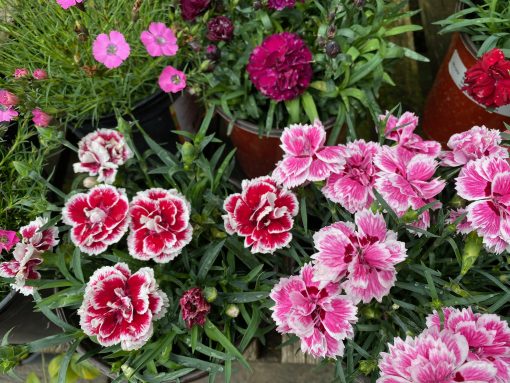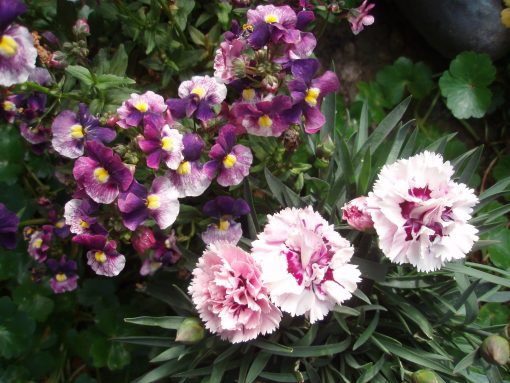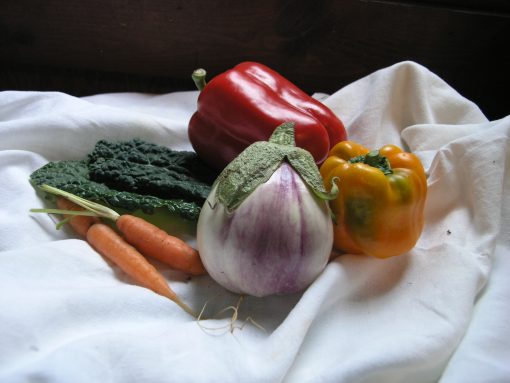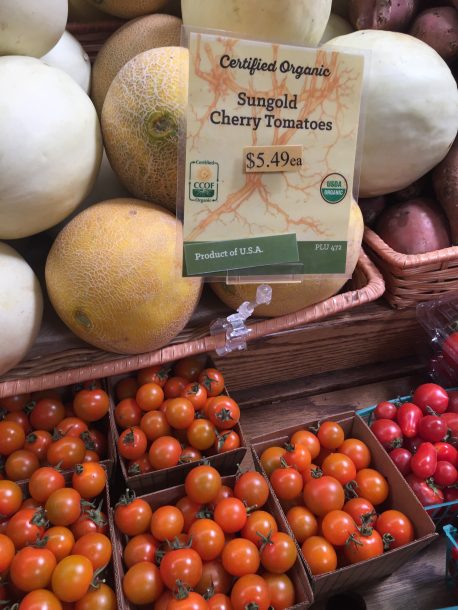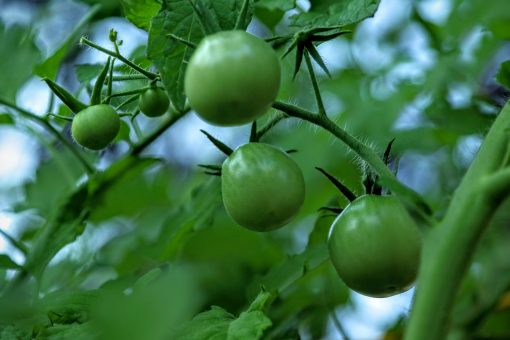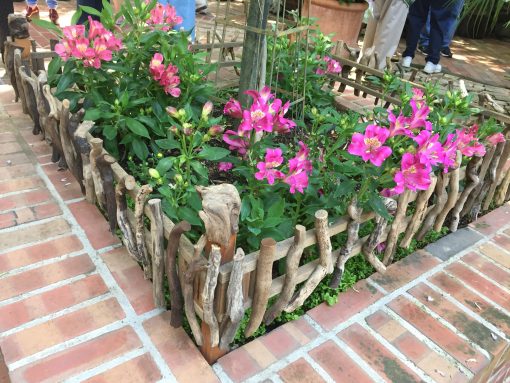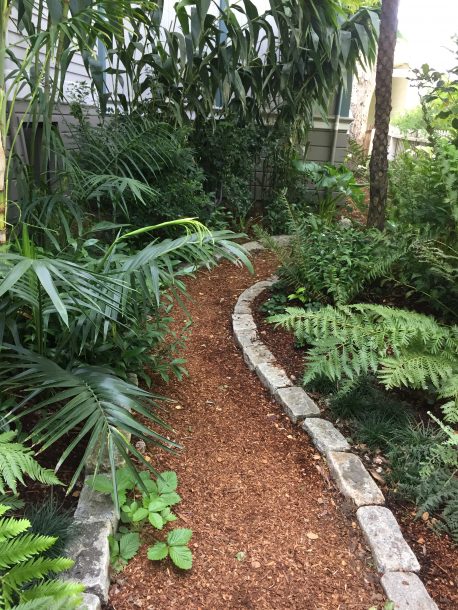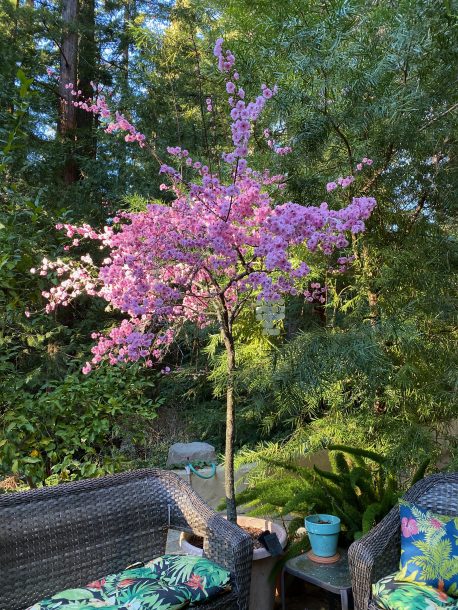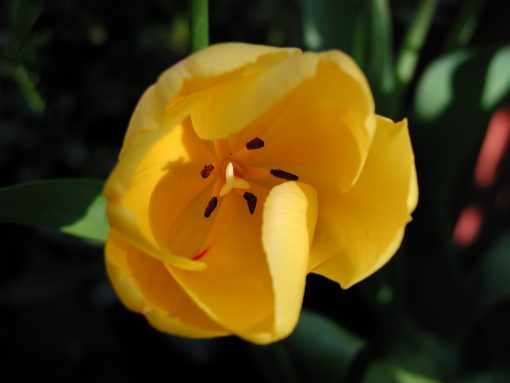
How nice that we?ve gotten some much needed rainfall earlier this month. I was getting a bit nervous after our dry February. So far this season I?ve received 39 inches of rainfall up here in Bonny Doon. Not enough for sure but getting closer to what use to be our normal of 60 inches.
But now we?ve turned the corner on spring with flowers bursting open within hours on these nice days. The Black-headed grosbeaks have returned to my yard for the breeding season. Like clockwork they show up on almost the exact day each year. It?s my version of the swallows returning to San Juan Capistrano.
Looking forward to the rest of spring, here?s what I?ll be doing around here in April.
One of the perks of a cool, rainy spring is that shrubs and perennials have longer to establish a good root system before hot weather arrives. Ground covers have time to spread and shade the soil, conserving moisture come summer. What strategies can you follow that will make your garden low maintenance this summer and give you extra time to enjoy it?
Plant in masses. When designing or reworking your garden, make it easy on yourself by planting fewer varieties but in greater numbers. Planting this way will reduce the number of different maintenance tasks for that area. For example, if you have a large hillside that you want to cover, plant it with a groundcover like ceanothus gloriosus which fans out 6-15 feet. Some manzanitas like arctotaphylos uva-ursi eventually spread to15 feet each. Sage leaf rockrose and germander are also good for sunny areas. A shady spot could be planted with ajuga, creeping mahonia or Walkabout Sunset lysimachia.
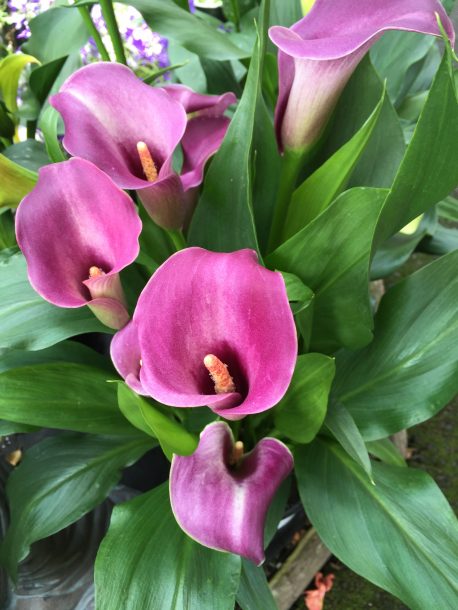
Another time saving strategy is to group plants with similar moisture needs. This may sound like a no-brainer but if you have just one prima donna in a bed of more drought tolerant plants, you’ll be dragging the hose over to that bed for just one plant or having to run your irrigation system more for it. If you find that some of your plants are not quite as low water as you’d like, move those to their own spot. In general, plants with large leaves usually require more water and transpire faster while drought tolerant plants typically have one of more of the following characteristics: deep taproots and leaves that are smaller, silver, fuzzy or succulent.
Avoid putting thirsty plants in hard-to-reach places. If the irrigation system doesn’t reach that far, keep it simple by planting drought tolerant woody shrubs or perennials there.
Pluck weeds when the soil is moist and before they have gone to seed. Even if you don’t get the entire root of more persistent weeds, just keep pulling at the new growth. Eventually, the plant will give up having used up all of the food stored in its roots. I?m still battling hedge parsley with it?s sticky seed balls that will cling to my shoelaces and the dog?s fur if I don?t get it before it sets seed.
Plant edibles among your other plants near the kitchen. Tricolor sage looks great alongside other plants with pink and violet leaves. Purple basil planted below the silver foliage of an artichoke is another great combination. Lemon thyme growing next to a burgundy colored dwarf New Zealand flax would look spectacular, too. And don’t forget to plant decorative and delicious Bright Lights Swiss chard with its stalks of yellow, orange, pink, purple, red, green and white throughout your beds. It?s one of the easiest vegetables to grow.
So get the lemonade ready to enjoy all your free time later this season.





